






The Birth
Of
Auto-Wrappers
Part 1
The early years... 1947 to 1953
The story starts just after the war, the text below is taken from article in by author Harry Miller,
written, published and printed in 1953, this is one of the most accurate and informative
accounts of the early years of Auto-Wrappers.
Photo Ref: AW 0020a
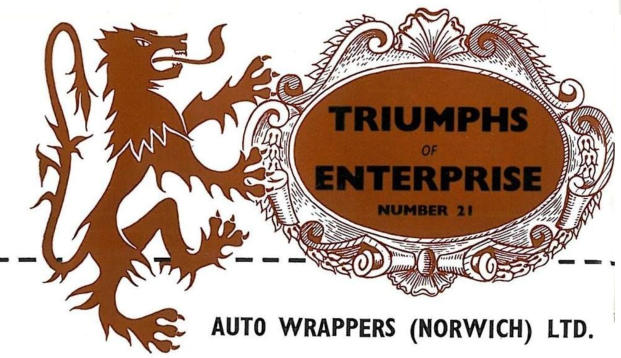
In
the
last
decade
food
hygiene
has
become
good
business.
During
the
squalid
war
years
few
could
have
forecast
such
a
trend.
Among
the
few
was
Charles
William
Maddison,
who
was
prepared
to
chance
his
savings
and
his
future
on
the
belief
that
public
demand
for
goods
packaged
at
the
production
end
would
be
much
more
insistent
after
the
war
than
it
had
been
before.
He
had
spent
all
his
working
life
with
packaging
machinery,
Starting
as
an
apprentice
to
a
wrapping
machine
manufacturer,
and
working
his
way
through
the
production
departments,
he
learnt
every
branch
of
manufacture
and
maintenance.
Subsequently,
he
gained
experience of operating machinery in a user's factory and of supervising a pack-aging department.
By
1945
Mr
Maddison
was
capable
of
designing
a
machine
on
the
drawing
board,
making
any
of
its
parts
in
the
machine
shop
and
assembling
and
running
the
complete
unit.
He
had
every-thing
a
prospective
wrapping
machine
manufacturer
needed
except
capital,
and
for
that
ingredient
he
thought
optimism
might
be
a
sufficient
substitute,
optimism
had
to
be
braced
with
courage
and
guided
by
judgment.
The
wrapping
machine
industry,
as
Mr
Maddison
knew,
was
served
by
a
small
group
of
companies
with
substantial
resources
and
established
reputations.
It
was
not
enough
for
the
newcomer
to
produce
a
good
machine. He would have to be sure that the market was elastic enough to offer living room for a minnow among the tritons.
When
the
war
was
over
Mr.
Maddison
looked
around
for
a
factory
building
and
a
labour
force.
He
found
a
ruined
shack
in
a
bombed
part
of
Norwich.
It
had
tolerable
walls
and
nearly
enough
roof.
There,
with
six
other
pairs
of
hands,
he
set
up
an
engineering
workshop.
A
period
of
hand-to-mouth
progress
followed.
The
little
team
constructed
a
wrapping
machine,
sold
it,
used the profit to buy materials for another machine and began the cycle over again.
Photo Ref: AW 0020b
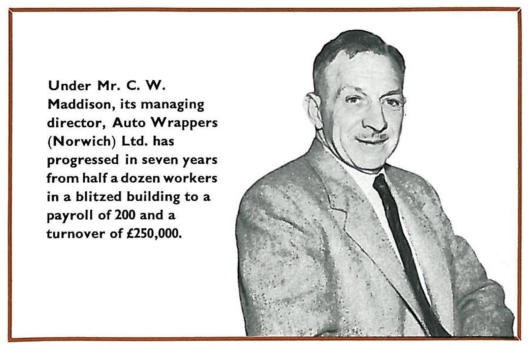
A
market
certainly
existed,
but
Auto
Wrappers
(Norwich)
Ltd.
as
the
company
was
to
call
itself,
had
chosen
a
slow
way
to
break
in.
An
injection
of
outside
capital
would
have
saved
much
heartburning,
but
capital
often
has
tough
strings
and
there
is
nothing
more
fiercely
independent
than
a
new
enterprise
on
the
edge
of
failure.
Many
of
Mr
Maddison's
associates
and
advisers
urged
him
to
close
down
the
business,
and
during
a
particularly
dark
period
his
obstinacy
or
faith,
as
some
would
call it, was all that kept it alive.
Gradually
the
hard
work,
good
design
and
low
overheads
began
to
show
results.
The
firm
took
over
some
adjacent
Nissan
huts,
and
then
an
aircraft
hangar,
a
survivor
from
the
First
World
War,
as
demand
increased
other
problems
arose,
raw
materials
were
scarce
and
deliveries
of
the
finished
product
precarious.
A
better
factory
building
was
needed,
but
a
license
was
long
withheld,
during
the
licensing
delay
Auto
Wrappers
had
to
suffer
the
further
complication
of
transferring
part
of
their
production to a temporary building in another part of Norwich.
Meanwhile,
Mr
Maddison
helped
with
design,
took
a
turn
at
production,
handled
sales,
negotiated
with
the
material
suppliers
and
pestered
or
cajoled
official
departments.
A
few
other
wrapping
machine
makers,
who
had
started
since
the
war,
had
given
up
the
struggle
by
the
time
Mr
Maddison
began
his
new
building.
A
large
machine
shop
was
erected
and
equipped
with
up-to-date
tools.
The
building
programme
is
not
yet
complete
and
the
site
is
still
cluttered
with
builders'
gear
and
materials,
brick
structures
are
rising
around
the
tin
huts
so
that
production
shall
not
be
interrupted.
More
space
will
soon
be
available,
for
the
drawing
office,
clerical
departments
will
move
into
a
new
building
and
their
old
quarters
become
a
staff
canteen.
Mr
Maddison will abandon his cubby hole, choked with files and packages, for something more like a managing director's office.
Photo Ref: AW 0021a
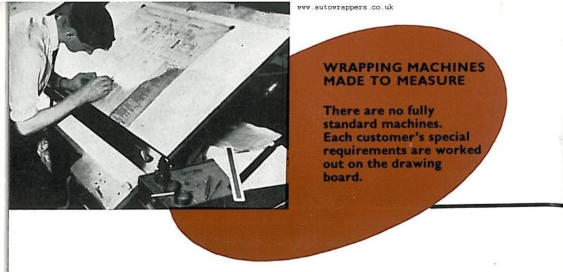
The
labour
force
has
grown
faster
than
the
premises,
the
original
half-dozen
have
swelled
to
more
than
200.
Norwich
was
not
an
ideal
recruiting
ground
for
engineering
labour,
its
traditional
industries
are
shoes
and
grocery
products.
Auto
Wrappers
Ltd.
had
to
make
skilled
machinists
out
of
men
with
no
mechanical
background.
Even
in
their
early
struggling
days
they
took
apprentices
with
a
view
to
future
needs,
today
that
policy
is
showing
results
in
a
highly
skilled
team.
Trainees
of
seven
years
ago
are
now
helping
to
train
new
workers,
there
is
a
waiting
list
of
apprentices,
the
news
has
evidently
spread
around
Norwich that Auto Wrappers Ltd. are a good firm to work for.
Wages
are
augmented
by
bonus
and
by
an
additional
share
in
the
profits.
Youths
on
National
Service
can
claim
their
accumulated
share
of
profit
on
their
return.
Employees
can
buy
preference
shares
and
many
save
5s.
to
10s.
a
week
for
this
stake
in
the
business.
The
majority
of
the
Company's
shares
are
held
by
its
members.
It
has
financed
a
benevolent
fund
which
is
administered
by
a
mixed
committee
of
workers
and
management.
Members
can
draw
maternity
benefit
and
claim
financial
assistance.
Mr
Maddison
attributes
the
good
work
and
morale
of
his
men
in
part
to
his
own
frequent
appearance
on
the
shop
floor,
he
is
usually
in
overalls,
lending
a
hand
at
the
lathe,
adding
some
touches
to
a
drawing,
or
testing
a
machine
before
dispatch.
There
is
no
doubt
that
the
best
relations
between
top
management
and
shop
floor
are
personal
relations.
But
successful
companies
do
not
remain
a
manageable
size.
They
out-grow
the
intimacy
of
the
small
firm,
and
Auto
Wrappers
Ltd.
is
fast
approaching
the
stage
of
metamorphosis
into
a
medium
sized
undertaking.
Its
managing
director
is
realising
that
the
"jack
of
all
departments"
must
soon
become
top
specialist
in
a
chain
of
specialisation.
Since
the
completion
of
the
new
machine
shop
the
growth
of
the
business
has
accelerated
enormously.
By
1st
June
this
year
it
had
exceeded
the
whole output for 1953. Turnover for 1954 is expected to reach £250,000.
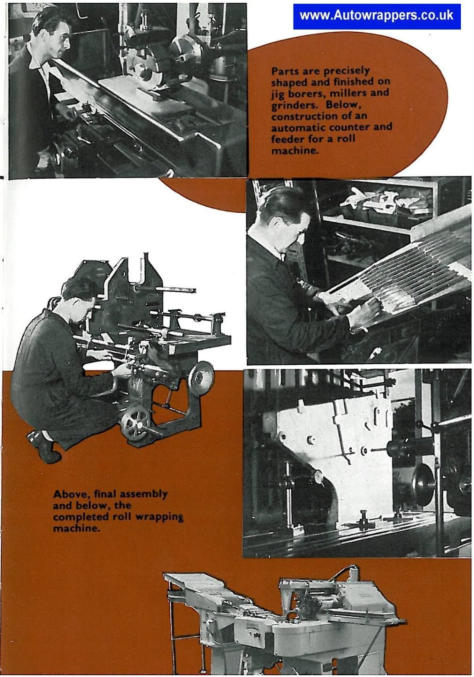
Orders
are
coming
in
so
fast
that
it
is
a
struggle
to
keep,
delivery
dates.
The
Company
employs
no
salesmen.
It
does
not
need
them.
"Every
machine
is
a
salesman",
says
Mr.
Maddison.
"If
I
can
get
an
enquirer
to
come
to
Norwich,
he
becomes
a
customer."
Customers
may
not
see
the
precise
machine
for
their
needs.
There
is
no
standard
wrapping
machine.
There
are
standard
principles,
but
as
packages
differ
in
size
and
shape
the
handling
element
in
the
machine
must
be
made
to
measure.
Makers
of
goods
to
be
wrapped
send
specimens
of
their
packs
to
Norwich
so
that
the
best
method
and
wrapping
materials
can
be
decided
upon.
It
is
in
this
advisory
service
that
Mr.
Maddison's
varied
experience
of
the
industry
is
so
valuable.
Sometimes
a
manufacturer
presents
a
wrapping
problem
of
a
new
kind
and
Auto
Wrappers
design
an
original
and
exclusive
machine. Mechanical wrapping is one of the most vivid symbols of human skills being taken over by the machine.
A
newly
assembled
confectionery
machine
was
being
put
through
its
paces
when
we
called
at
the
Norwich
factory.
Fruit
drops
rolling
down
grooves
were
automatically
counted
and
batched,
each
batch
was
enclosed
in
a
transparent
wrapper,
metal
fingers
folded
the
ends,
a
gummed
label
wrapped
itself
over
all
and
familiar
tubes
of
sweets
emerged.
Auto
Wrappers
are
supplying
machines
to
several
confectionery
manufacturers,
to
most
of
the
biscuit
bakers,
to
producers
of
cigarettes,
medicaments,
toilet
goods,
and
to
at
least
one
packer
of
frozen
vegetables.
They
have
just
designed
a
machine
for
wrapping
frozen fish in cartons. From Canada has come an order for a machine to wrap sausages.
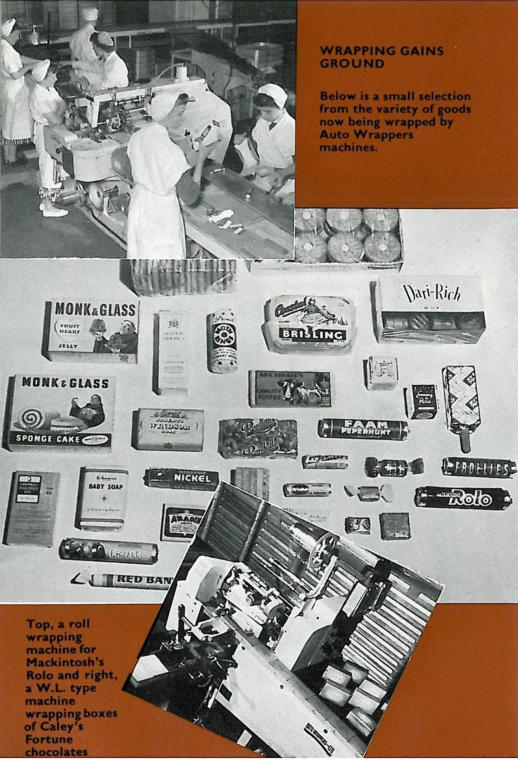
The
main
reason
for
the
success
of
his
machines,
says
Mr.
Maddison,
is
that
they
are
built
for
hard
work
and
easy
maintenance.
Many
of
them
are
in
operation
day
and
night
for
seven
days
a
week.
They
are
less
bulky
and
less
expensive
than
most
other
wrapping
machines.
Prices
were
not
affected
by
the
last
wage
increase
and
export
prices
have
actually
been
reduced.
Exports
are
growing
and
twenty
countries
are
already
on
the
list.
A
representative
in
Holland
arranges
and
controls
agencies
throughout
Western
Europe.
Canada
is
a
promising
market
in
itself
and
will
become
a
channel
for
sales
to
the
U.S.A.
Prices
of
American-made
wrapping
machines
are
more
than
double
those
of
Auto
Wrappers.
The
prospect
at
home
and overseas is bright.
Plans
at
Auto
Wrappers
(Norwich)
Ltd.
include
more
mechanisation
of
production
to
cope
with
the
growing
demand.
The
cleaner
food
movement
is
not
a
craze
but
a
social
revolution
with
statutory
support.
The
sale
of
biscuits,
cakes
and
sweets
by
the
Woolworth
and
Marks
and
Spencer
type
of
store,
and
the
gradual
but
inevitable
growth
of
self-service
retailing,
have
made
wrapping
almost
a
condition
of
selling.
There
are
few
commodities
which
are
not
improved
in
appearance
and
economy
by
a
sealed
container.
New
packaging
materials,
especially
plastics,
are
products
of
the
movement
and
are
helping
to
promote
it.
It
will
become
a
public
habit
to
expect
goods
to
be
ready
wrapped
in
a
much
broader
sphere
than
the
obvious
one
of
food-stuffs.
That
is
still
a
long
way
ahead.
But
Mr.
Maddison's
business
has
set
its
sails
with
skill
to
take
full
advantage
of a trade wind.
By Harry Miller ( Printed 1953 )
Below is the original Certificate of company registration from 1948
Photo Ref:AW0306
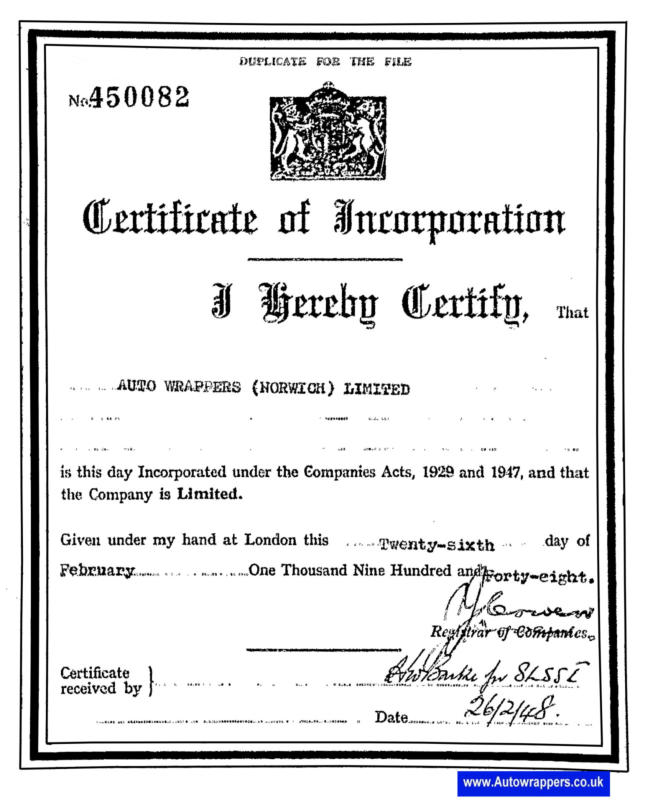
The
Photo
below
shows
an
entry
from
the
1950
Kellys
Directory,
this
shows
the
address
of
Autowrappers
as
"Rose
Yard,
St
Augustines
St"
we
believe
that
this
may
have
been
the
office / contact address during the move between factories and construction work.
(editors note : any help with conformation of this would be appreciated.)
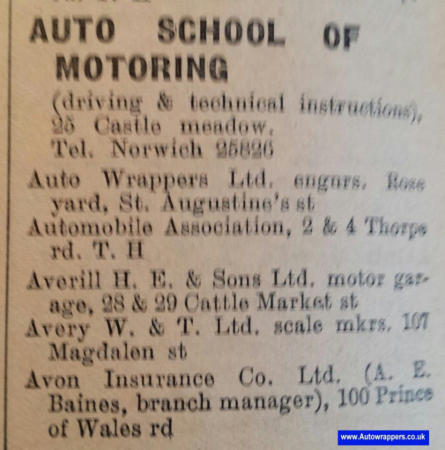
Photo Ref AW0205, Photo Courtesy of Mick Tooke
The
Mousehold
Works,
was
a
temporary
home
for
Autowrappers,
whilst
planning
permissions
were
being
processed
and
site
clearence
was
taking
place
at
Edward
St,
the
company
used
the
mousehold
works
as
a manufacturing base, from 1948 until the Edward St factory was finished in 1952
Photo Ref: AW 0030
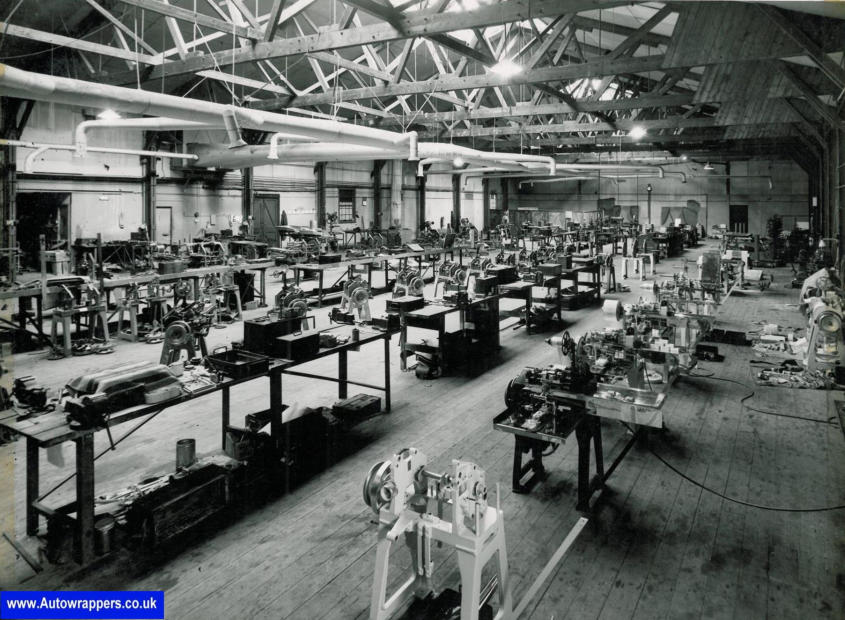
The
Moushold
works,
although
small,
allowed
the
new
range
of
machines
to
be
developed
and
manufactured,
it
was
divided
in
to
areas
for
different
types
of
machines. Below
shows
the
R
section
(
Roll
Wrapper )
Photo Ref: AW035
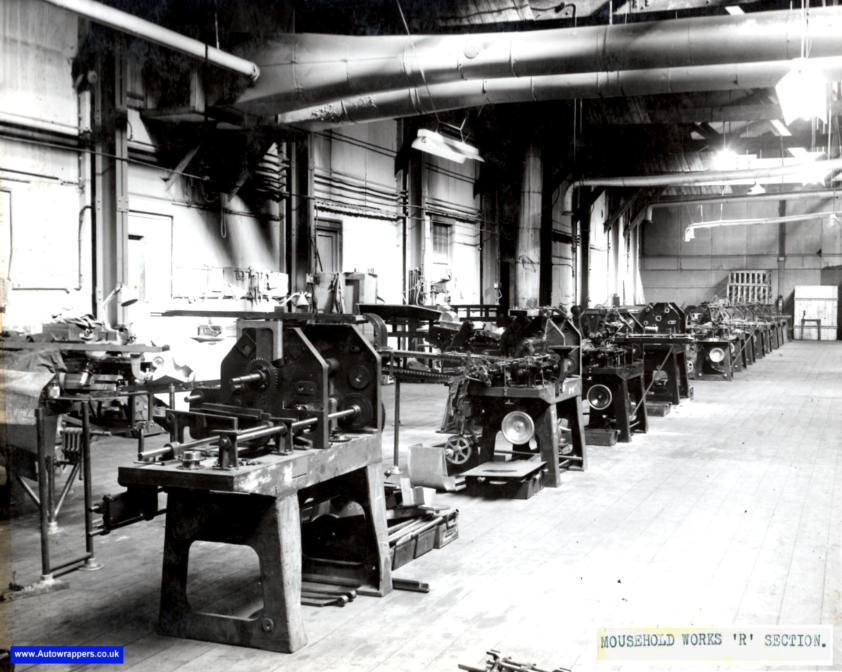
The
plating
shop
below
was
setup
in
a
nearby
Nissan
Hut
left
over
from
the
war.
Chrome
Plating
was
applied
to
many
parts
of
the
machines.
Some
of
this
plating
equipment
survived
many
years,
and
was
used at both Edward St and the Whiffler road factories.
Photo Ref: AW0352
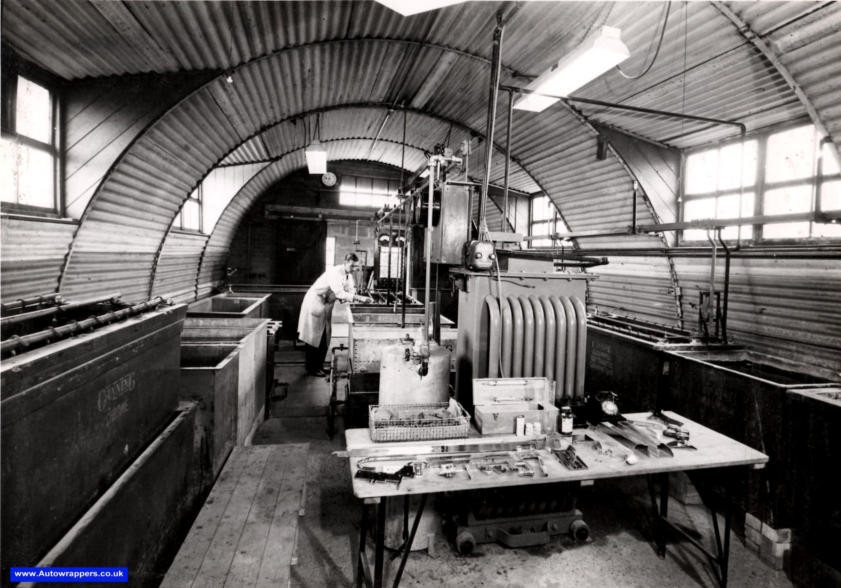
After
the
War
there
was
high
demand
for
luxury
items
like
Chocolate,
Sweets
and
Ice
Cream,
During
the
war
these
items
had
been
rationed
or
were
not
available
due
to
restictions
of
importing
luxury
ingredients,
the
high
demand
required
new
packaging
machines
for
these
products,
as
many
of
the
pre
war
machines
had
been
scrapped
and
melted
down
to
provide
steel
and
materials
for
building
tanks
and
planes,
Ice
Cream
was
one
of
these
first
available
luxury
items,
Bill
Maddison
had
manufactured
an
Ice
cream
Wrapping
machine
for
a
local
Ice
cream
company,
The
Aldous
Factory
in
Norwich,
demand
from
other
Ice
cream
manufacturers
followed
and
Autowrappers
decided
to
have
a
stand
at
the
National
Dairy
Show
in
Olympia
in
London
to
promote
the
sale
of
these
new
machines,
Below
is
the
early
ice
cream
wrapping
machine.
Photo Ref: AW0369
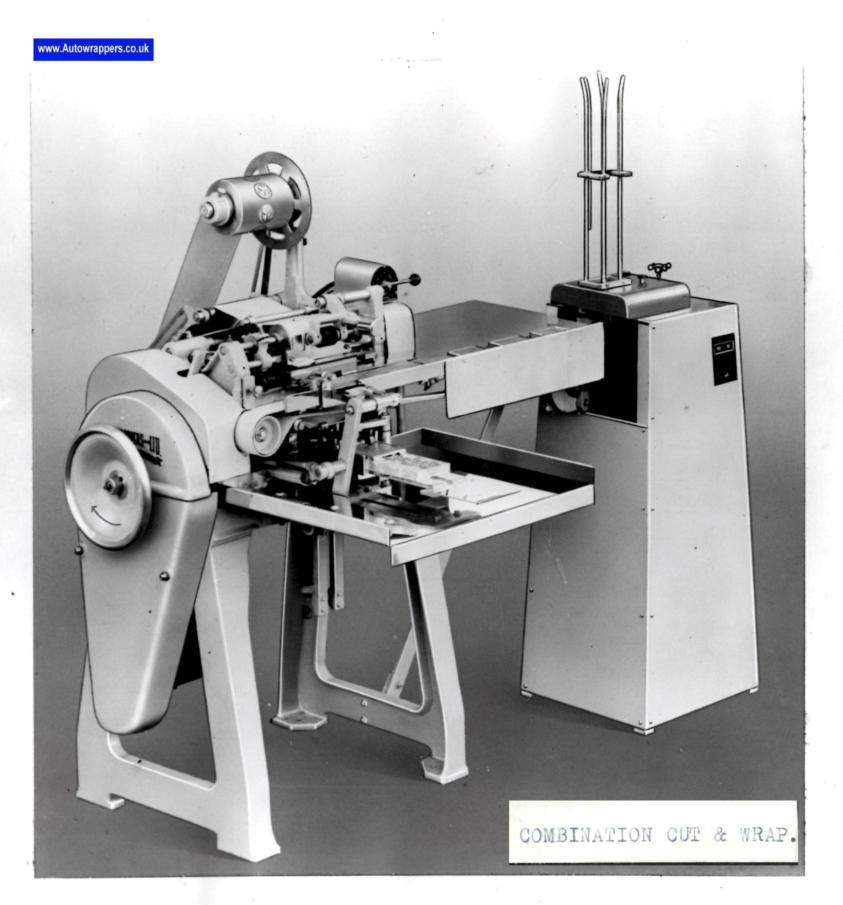
Below in the Aldous factory in Norwich shows Auto Wrapper machines ready to wrap blocks of ice cream
Photo Ref: AW0386
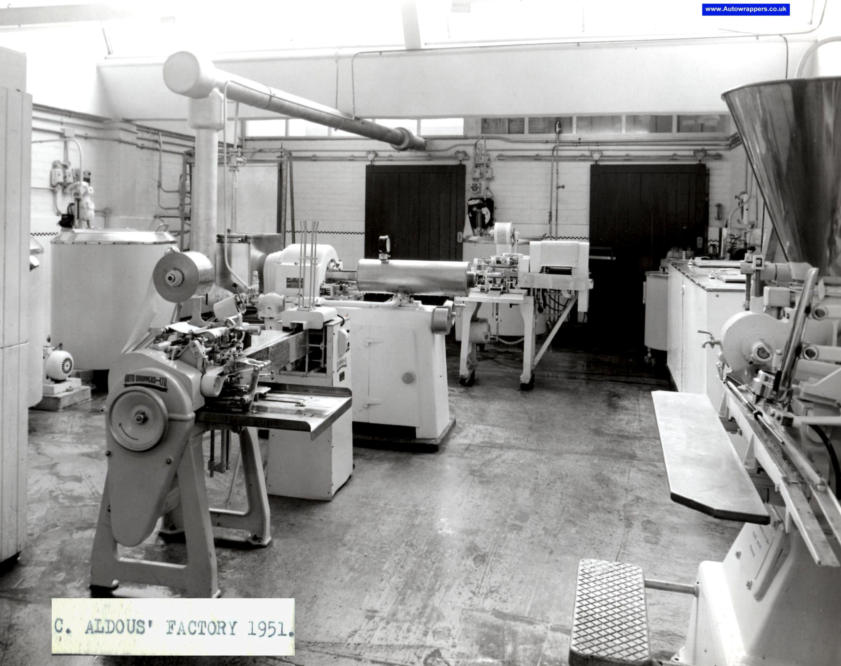
Another view of the Aldous factory in Norwich and the Auto Wrapper machines
Photo Ref: AW0377
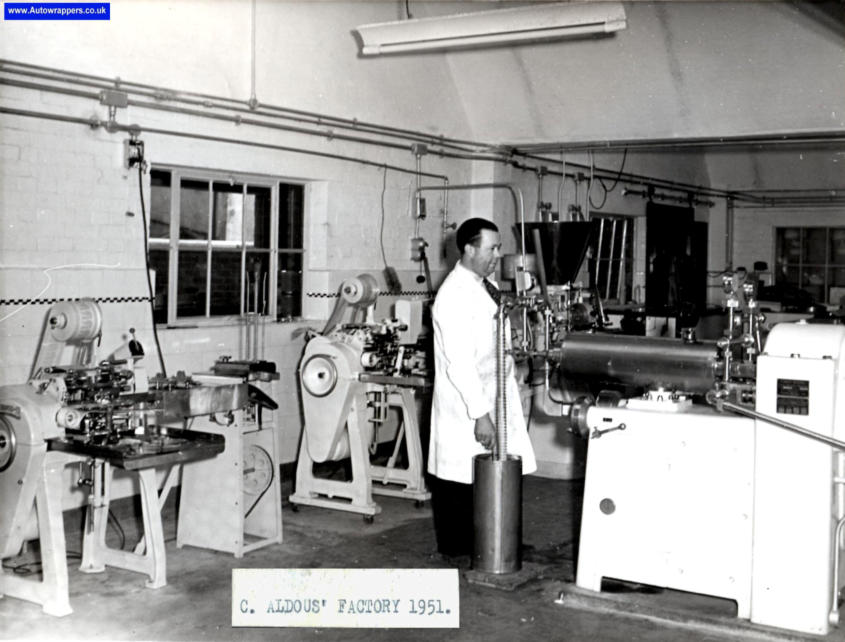
The machines sparked a lot of interest at the trade shows. and the order books for these machines soon
filled up.
Photo Ref: AW0370
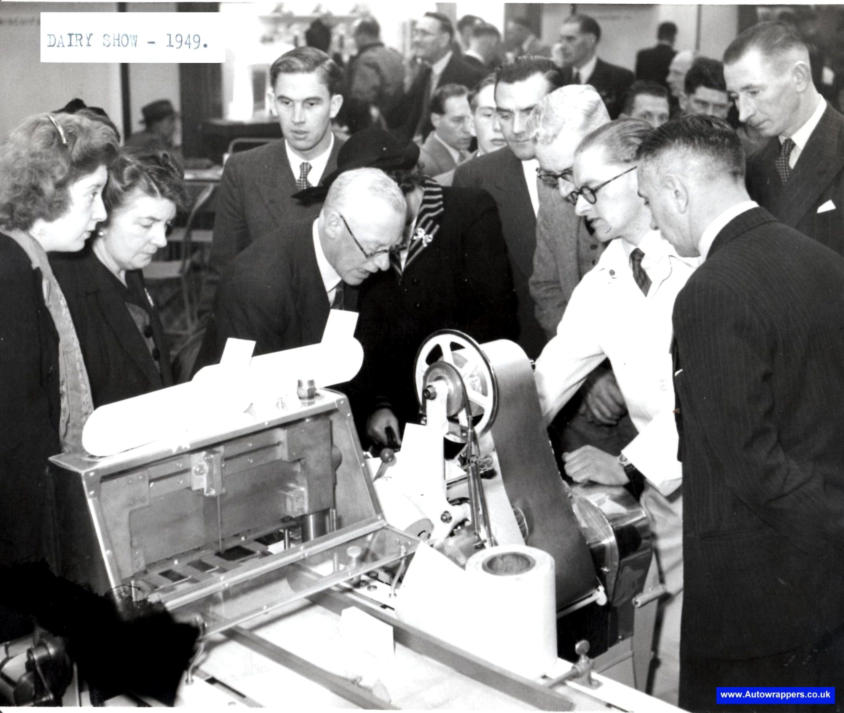
As demand and interest for these machines increased, so did inquiries from abroad, Soon Auto-wrappers
were exporting these machines to other countries around the world.
Photo Ref: AW0371
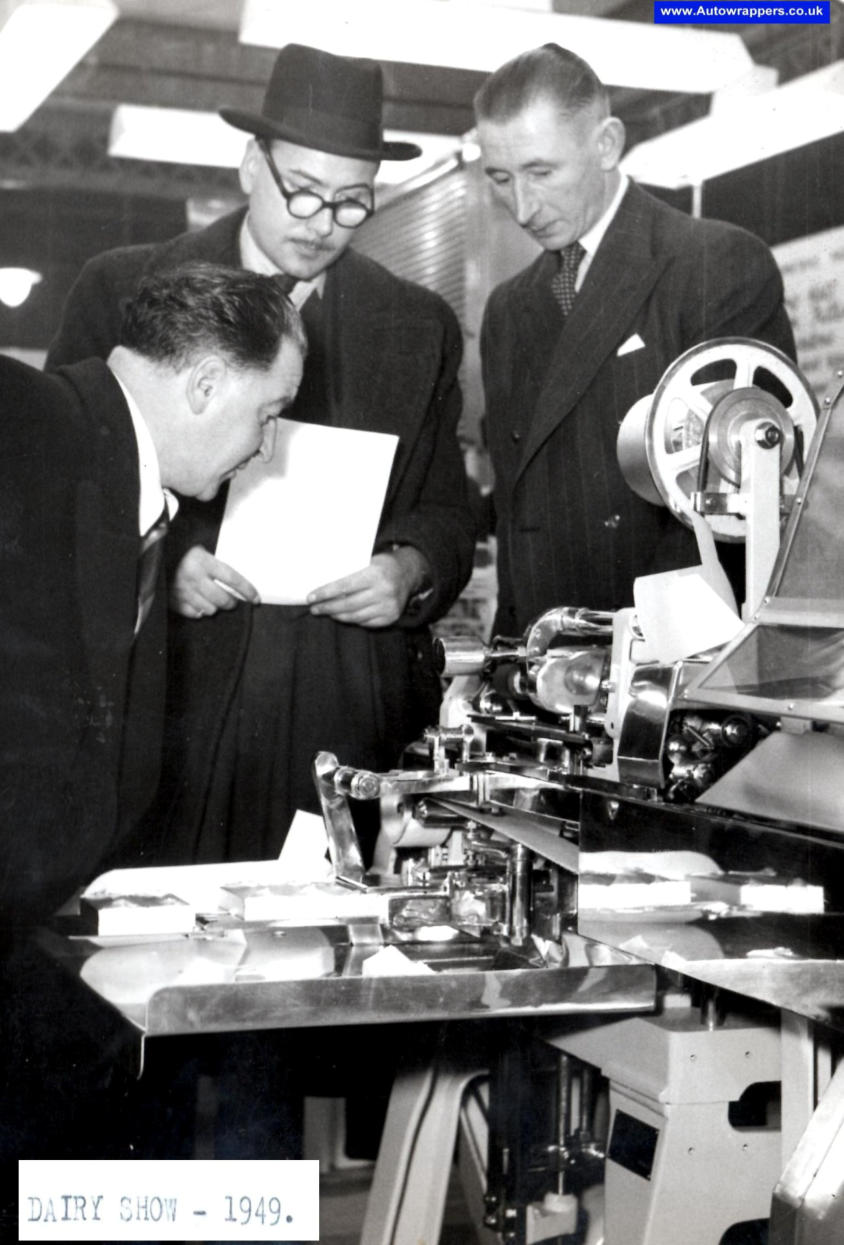
The Interest from other countries soon encouraged Autowrappers to exhibit at trade shows outside of the UK,
Below is the stand at the 1951 trade show in Denmark.
Photo Ref: AW0383
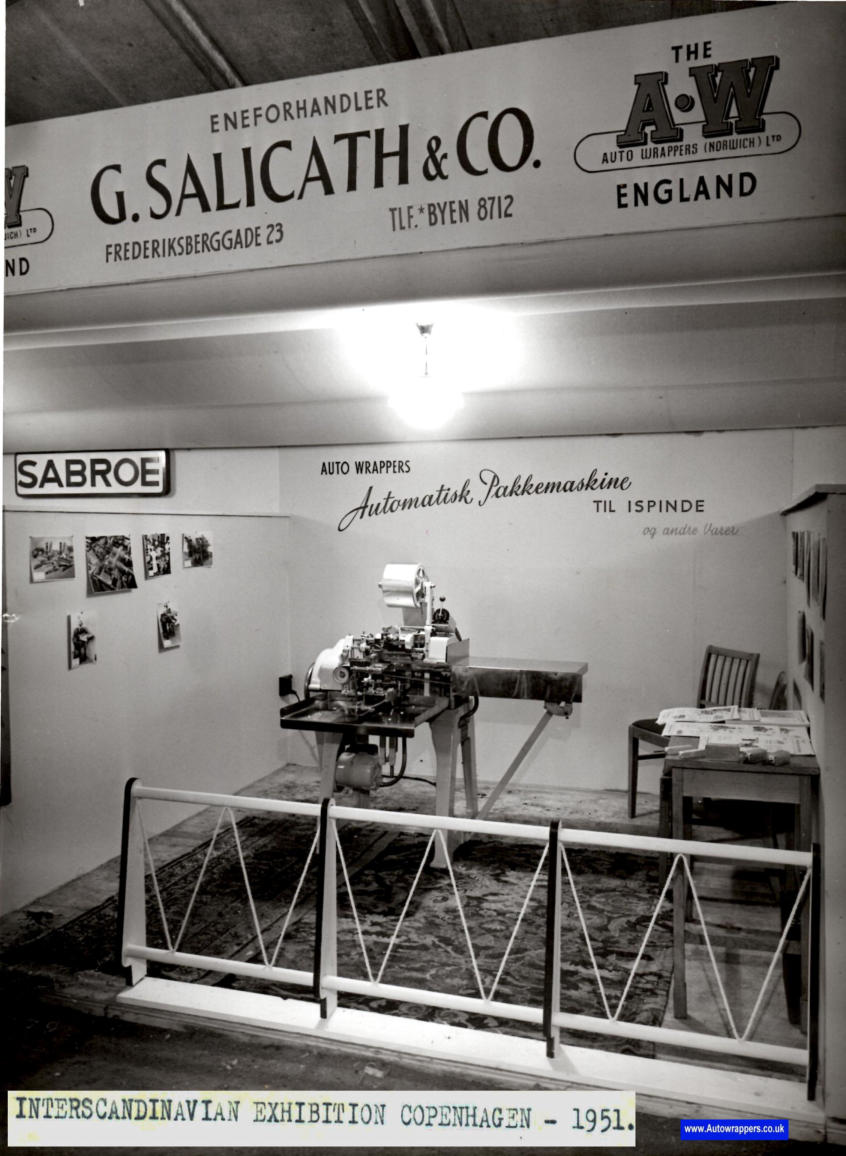
As
time
went
on
the
machines
became
more
elaborate,
and
also
did
the
trade
stands,
Notice
that
the
right
hand
wall
of
the
stand
actually
shows
the
very
same
photos
of
the
Aldous
factory
in
Norwich
and
the
Spangles Wrappers that we have in this history section.
Photo Ref: AW0387
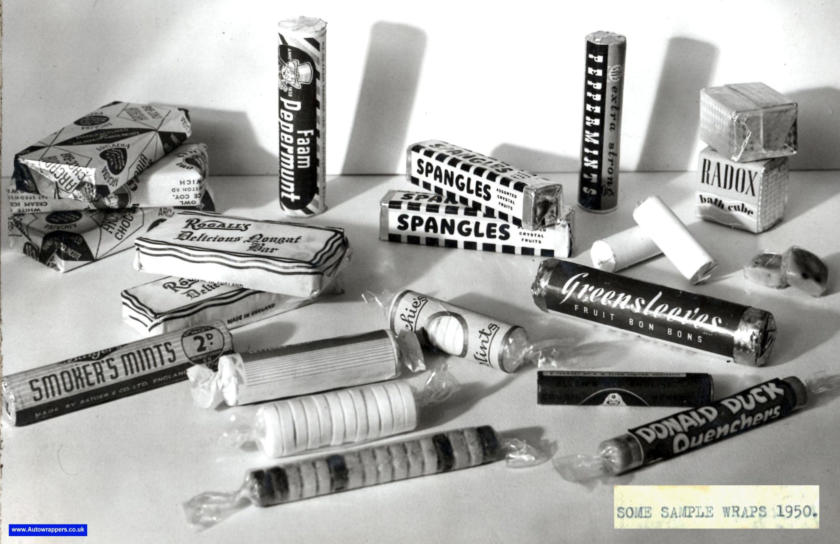
When
Spangles
were
introduced
By
Mars
in
1950,
sweets
were
still
on ration,
and
the
price
of
sweets
had
to
be
accompanied
by
tokens
or
points
from
one's
ration
book,
but
Spangles
required
only
one
point
instead
of
the
two
required
for
other
sweets
and
chocolate
This
bonus,
accompanied
by
effective
marketing, made Spangles even more popular.
Photo Ref: AW0373
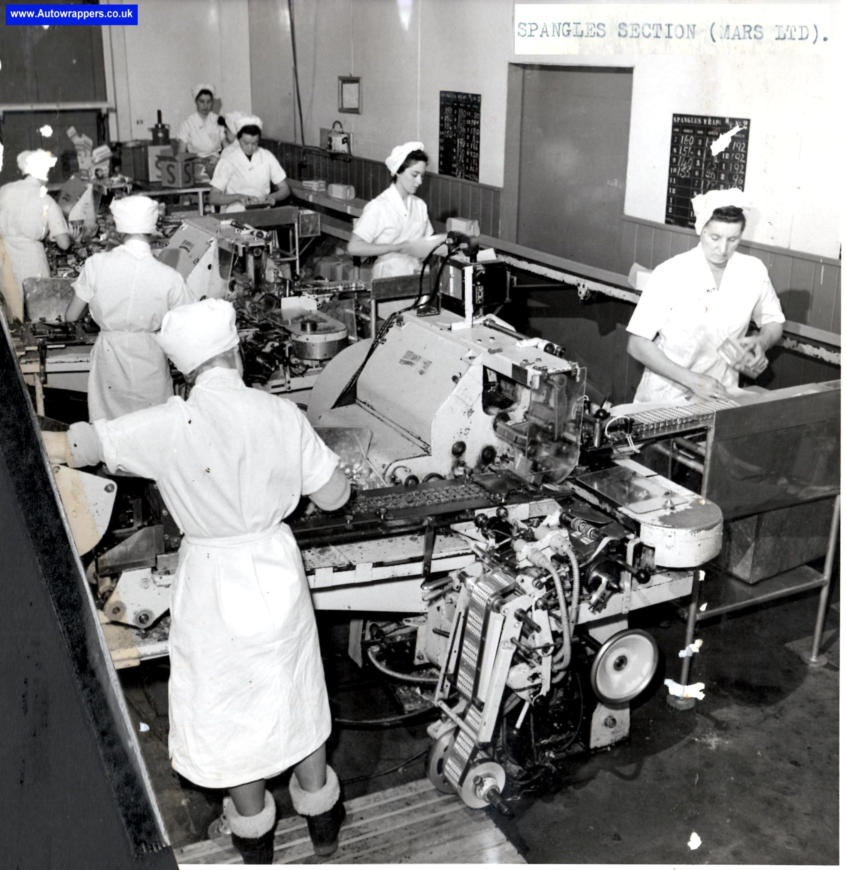
Whilst
the
company
was
busy
making
new
machines,
work
was
taking
place
to
construct
the
new
Auto-
Wrapper
factory,
A
bombed
out
part
of
Edward
St
was
to
become
the
site
for
the
new
factory.
The
site
originally
was
the
"Norwich
Crape
Co"
a
long
standing
producer
of
crape
fabric.
The
shattered
remains
of
this old factory were demolished ready for building the new Edward St factory.
Photo Ref: AW0243
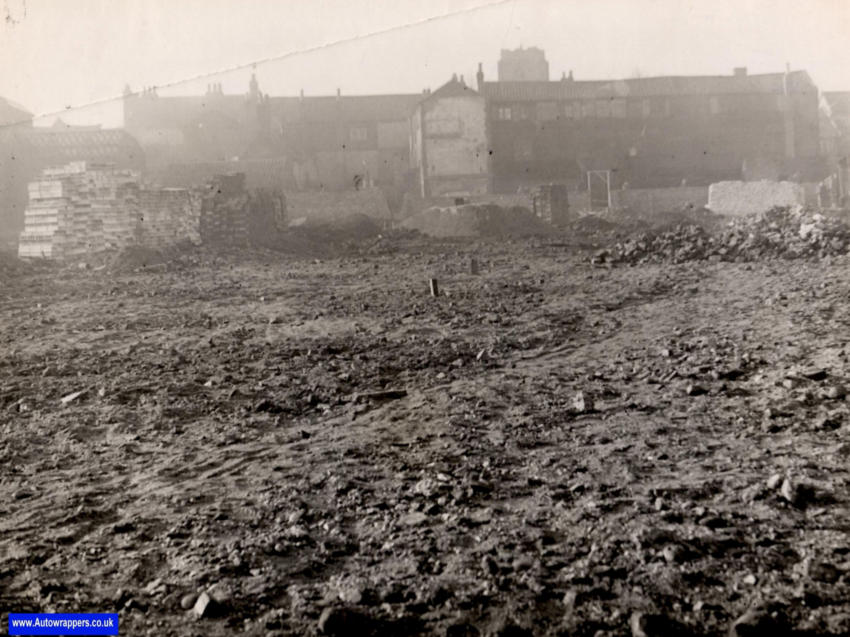
The new factory gradually started to take shape, note the war time nissan huts in the background.
Photo Ref:AW0045
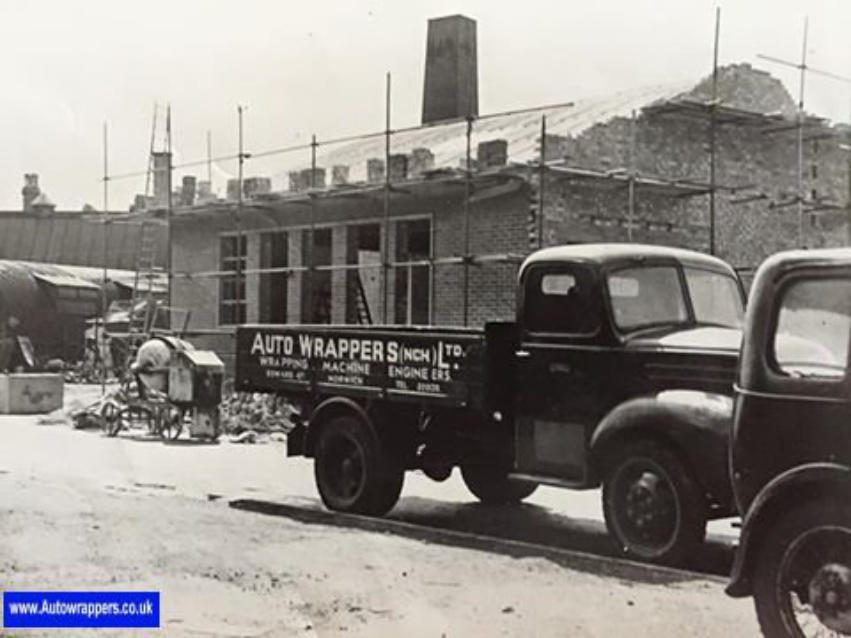
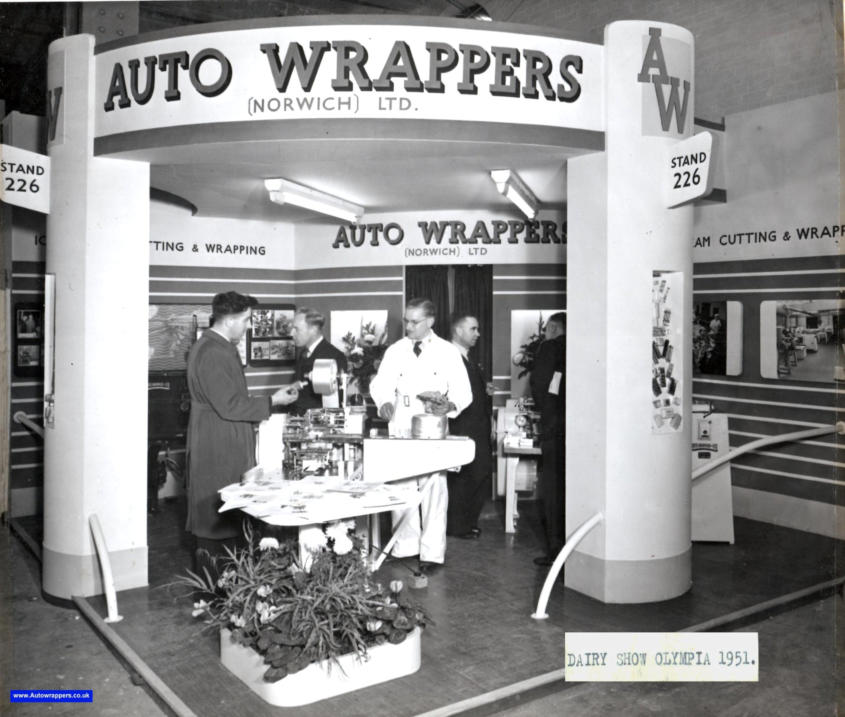
Photo Ref: AW0387
Below
shows
some
of
the
products
that
were
wrapped
on
the
new
Autowrapper
machines,
considering
the
company
had
only
been
operating
for
3
years
this
was
a
great
achievement.
The
early
machine
range
consisted
of
the
Combination
cut
and
wrap
style
machine
as
used
in
wrapping
ice
cream
and
chocolate
bars
(top
left)
,
The
R
machine
which
was
a
Roll
Wrapper
for
tube
style
sweets
(bottom),
and
then
the
next
development
was
the
RP
machine
(top
middle)
a
combination
of
the
above
machines
which
produced the Square Pack which wrapped the Spangles